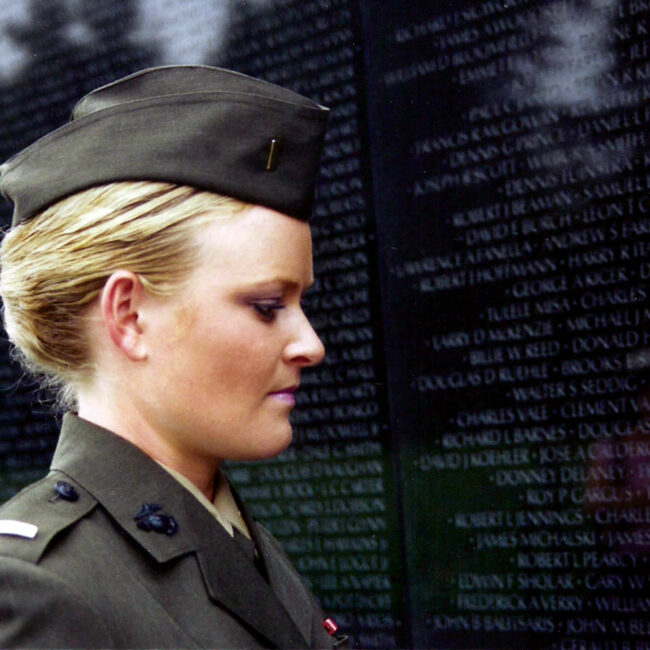We think of the cinema of activism in documentary filmmaking as a relatively modern phenomenon, something first awakened in the 1960s and 1970s and popularized by the likes of Michael Moore and Laura Poitras and Alex Gibney. But the success films like Bowling for Columbine (2002) and An Inconvenient Truth (2006), both Oscar winners and box-office hits, not to mention such devastating investigative documentaries as The Cove (2009), the Oscar-nominated The Invisible War (Independent Lens, 2012), which directly led to a change in policy towards the prosecution of rape in the military (2012), and The Hunting Ground (2015), were built on a tradition that goes back decades.
Here are some of the landmarks in the cinema of advocacy and activism: documentary as investigative journalism, as an educational tool, as exposé of injustice and inequity, and as a vehicle for political or social change. [Note: All these films are available on various streaming services and DVD rental, while the first two are in the public domain.]
The Plow That Broke the Plains (1936) / The River (1938)
In The Plow that Broke the Plains and The River, both directed by Pare Lorentz and funded by the U.S. Government, two currents of non-fiction filmmaking met: the educational project and the propaganda film. These were pro-New Deal films but they addressed the dangers of over-cultivation of American farmland. The Plow casts its lens to the Dust Bowl and The River on the Mississippi River, each documenting the specific conditions that caused the ecological devastation of the regain and offering a more sustainable approach to farming. Both films are in the National Film Registry, and Lorentz now has a filmmaking fund named after him. [Watch The Plow That Broke the Plains and The River]
Let There Be Light (1946)
Directed by John Huston for the Army Signal Corps at the end of his service in World War II, Let There Be Light focuses on a psychiatric hospital where returning American soldiers suffering from “psychoneurotic” damage (what we now call post-traumatic stress disorder) underwent treatment. Apparently, Huston’s portrait was too frank and too sensitive for the military, which suppressed the film for decades. Not only did it show how vulnerable humans were to the psychological trauma of war, it portrayed racially integrated military life in the hospital at a time when the rest of the military was still segregated. But even if civilians were unable to see the film until 1980, its message rippled through the government.
Night and Fog (1955)
Alain Resnais’ powerful and moving 1955 documentary was the first major film to directly confront the scope and the horror of the holocaust. Using horrifying B&W archival footage and contemporary color footage of the empty camps (which stand as haunting memorial) and commentary written by Holocaust survivor Jean Cayrol (who forgoes the impersonal technique of generalized commentary and makes every reference specific to the experience of individual victims), the 30-minute non-fiction film has lost none of its power over the years. It remains the most arresting, horrifying, and haunting portrait of the Nazi death camps ever put to film.
The Up Series (1964-2012)
In 1964, the British documentary Seven Up presented a portrait of fourteen seven-year-old British children from diverse social and economic backgrounds. Michael Apted, a young researcher on the original Seven Up, carried the project through subsequent follow-ups every seven years through 56 Up (2012). Where the initial entry is simply a snapshot of the ambitions and nascent social perspectives of kids in the midst of forming, each succeeding installment became longer and denser with accumulated footage and the project developed into the greatest piece of cinematic social anthropology ever made, an unprecedented and astounding look into the socialization of a generation and a clear-eyed look at the defining class system in Britain.
Titicut Follies (1967)
Documentary legend Frederick Wiseman established his unique approach to filmmaking with his first feature, a portrait of life for the patients/inmates of Bridgewater State Hospital for the criminally insane in Massachusetts. He would spend weeks with his crew observing his subject/subjects with cameras but no film, just to get folks used to their presence, before spending weeks more shooting. The result is a portrait of an institution in all of its routines and dysfunction and a hard-hitting expose of conditions that the patients endured. Though the film was suppressed for over a decade by the hospital, its revelation of deplorable living conditions and physical mistreatment and neglect helped the campaign to improve care for the mentally disabled.
Hearts and Minds (1974)
Peter Davis‘s documentary on the American involvement in the war in Vietnam became almost as controversial as the war itself. Inspired by the newly revealed (at the time) evidence of the Pentagon Papers, Davis explores the ideology that led to war, the lies that the American government told its citizens, and how the protest reshaped the national psyche. The film confronted exactly what the United States did in Vietnam in the name of fighting communism and winning the “hearts and minds” of the Vietnamese people, and how those actions came back home in the form of disillusionment and distrust in the government. It won the Academy Award for Best Documentary Feature.
Harlan County USA (1976)
Barbara Kopple‘s Academy Award-winning documentary about a grueling coal miner’s strike in a small Kentucky town is both a vivid, immediate piece of cinematic journalism and a work of documentary activism that gives voice to the otherwise anonymous citizens standing up for their rights. When the Brookside coal miners voted to join the United Mine Workers union, the Duke Power Company refused to sign the union’s contract, kicking off a 13-month strike. Kopple and her camera crew gained intimate access to the workers during the strike and served as witnesses to the violent confrontations with strikebreakers, local police, and company thugs.
The Times of Harvey Milk (1984)
Directed by Rob Epstein and narrated by Harvey Fierstein, The Times of Harvey Milk profiles San Francisco Supervisor Harvey Milk, the first openly gay person elected to political office in the United States. His story stands as a measure of how far the gay and lesbian community had come, and his murder showed how far it had to go in terms of cultural acceptance. The documentary itself is almost as much a landmark: the first openly gay film to win an Academy Award and a portrait of an openly, proudly gay man as, simply, a man, a member of the community, and a human being whose life touched so many others. Hard to believe there was a time when that idea was so revolutionary.
The Thin Blue Line (1988)
Documentaries have changed minds, championed causes, and even reversed policy, but Errol Morris may be the first filmmaker to free a man from prison with a film. Randall Harris was convicted of murder on the testimony of another suspect and a psychiatrist who made his living as a professional “expert” for prosecutors. Morris set out to document the corruption of the trial process in death penalty cases and ended up with a meditation on the unreliability of memory and how minor differences in testimony can have a major impact on defining “the truth.” The film helped reopen the case and overturn Morris’s conviction, but the Academy of Motion Picture Arts and Sciences rejected the film from consideration in the “Best Documentary” category because of his use of impressionistic illustrations.
Read more about the women trailblazers in documentary activism like Jill Craigie, Susan Raymond, and Kopple in this piece by Maryann Johanson: “Pioneering Women of Documentary Film.” Feel free to suggest other favorite activist documentaries in the comments.




























